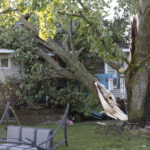Florida has survived eight hurricanes in 15 months, but more destruction is coming, according to risk modeling companies and economists speaking at the National Catastrophe In-surance Summit in Burlingame, Calif.
It’s just a matter of time, said speakers, who forecast hurricane, earthquake and terrorism scenarios.
Karen Clark, president and CEO of AIR Worldwide, described the potential impact of a major hurricane making landfall in New York City. “The 1938 Great New England Hurricane was one of the most destructive storms ever to hit the Northeast. Thousands of buildings were destroyed, and some coastal communities disappeared entirely,” she said.
That hurricane struck the Long Island Sound but reached 150 miles inland. If a similar category three storm makes landfall in a more populated area, say just east of New York City, it would result in approximately $50 billion of insured losses with total economic losses exceeding $100 billion, Clark said.
Additionally, three million people would be forced to evacuate low-lying coastal areas, and major bridges and ferries would be shut down. New York City subway tunnels would flood and City Hall would be on its own island. It could take up to 18 hours to evacuate the first million people from the area. And that’s not a worst-case scenario, Clark said.
AIR estimates that a loss equal to or greater than that of Hurricane Katrina has approximately a 5 percent annual probability for the United States.
In examining earthquakes, Dennis Kuzak, senior vice president for EQECAT Inc., said the New Madrid Earthquake that occurred in Missouri between 1811 and 1812 has been estimated at a magnitude of 7.5 to 8, but the Richter scale had not yet been invented. That earthquake created new lakes and changed the course of the Mississippi River.
Analysts predict a similar event will occur every 500 years, with a 15 to 20 percent probability. The probability is higher for smaller events, Kuzak said.
“If a similar earthquake struck today, estimated damages would likely exceed $300 billion, with only a fraction covered by insurance,” he said.
In discussing terrorism, Hemant Shah, president and CEO of Risk Management Solutions said a nuclear device exploding in the Port of Long Beach, Calif., would destroy one of the world’s busiest ports and immediate surroundings.
“A lot of manufacturing would have to be shut down and food would be unable to get in and out of ports,” he predicted.
Topics Catastrophe New York Hurricane
Was this article valuable?
Here are more articles you may enjoy.


 Aon Adds to List of Brokers Suing Howden US for Alleged Poaching, Theft
Aon Adds to List of Brokers Suing Howden US for Alleged Poaching, Theft  Florida Jury Returns $779M Verdict for Family of Security Guard Killed at Gambling Cafe
Florida Jury Returns $779M Verdict for Family of Security Guard Killed at Gambling Cafe  One of Highest Property Claims Severity Recorded in Q3 on Low Volume, Says Verisk
One of Highest Property Claims Severity Recorded in Q3 on Low Volume, Says Verisk  McKinsey Plots Thousands of Job Cuts in Slowdown for Consulting Industry
McKinsey Plots Thousands of Job Cuts in Slowdown for Consulting Industry 


